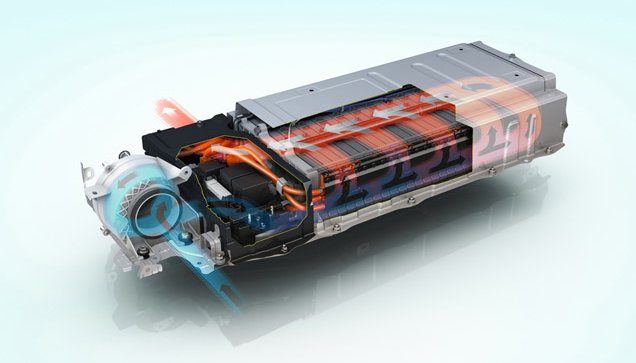It looks like Toyota isn’t actually giving up on full electric vehicles. Despite the fact it sees fuel cell cars as the future of transportation along with hybrid vehicles, the Japanese automaker is preparing better battery packs. Could be just a safety net, or the new batteries are intended for plug-in hybrid cars?
According to an Automotive News report, Toyota Motor Corp. says it made a breakthrough in developing smaller and more powerful solid-state batteries aimed to replace current lithium-ion units.
The coin-sized prototype is still in laboratory phase, but to make yourself an idea, the automaker managed a fivefold increase in power output regarding the technology it had in 2012.
These batteries are called “solid state” because the liquid electrolyte used in nickel-metal hydride and lithium ion batteries is replaced by a solid ceramic or polymer electrolyte.
For example, Toyota’s current solid-state battery has a power-density of around 400 Wh/l (watt-hour per liter), 100 more than lithium-ion counterparts. And that’s about to change, because the automaker wants to increase the numbers up to around 600 - 700 Wh/l by 2025.
Toyota battery research division general manager Hideki Iba said the first production units will offer a driving range of at least 300 miles (500 km) per charge for an average passenger car.
It’s a bit short compared with the 600-mile (1,000 km) envisioned range to really pose an advantage compared to modern gasoline vehicles, but don’t forget these solid-state batteries could be offered in hybrid vehicles to offer the best of two worlds.
As a quick reminder, lithium air cells, use a cathode that interacts with oxygen, which requires less materials and allows for even lighter packaging.
The lithium air technology is envisioned to enter production after 2030.
The coin-sized prototype is still in laboratory phase, but to make yourself an idea, the automaker managed a fivefold increase in power output regarding the technology it had in 2012.
These batteries are called “solid state” because the liquid electrolyte used in nickel-metal hydride and lithium ion batteries is replaced by a solid ceramic or polymer electrolyte.
More numbers
Getting solid also means the battery will be more compact and stable, being able to be packed more efficient and offer higher levels of power for the same or even smaller amounts of mass.For example, Toyota’s current solid-state battery has a power-density of around 400 Wh/l (watt-hour per liter), 100 more than lithium-ion counterparts. And that’s about to change, because the automaker wants to increase the numbers up to around 600 - 700 Wh/l by 2025.
Toyota battery research division general manager Hideki Iba said the first production units will offer a driving range of at least 300 miles (500 km) per charge for an average passenger car.
It’s a bit short compared with the 600-mile (1,000 km) envisioned range to really pose an advantage compared to modern gasoline vehicles, but don’t forget these solid-state batteries could be offered in hybrid vehicles to offer the best of two worlds.
This is just the tip
Remember the lithium air batteries? Toyota is said to be working on those too. A battery pack of that type should provide an energy density of around 1,000 Wh/l. The only downside is that the power on tap will be equal with solid-state batteries (don't mistake power density with the actual power that turns the motor).As a quick reminder, lithium air cells, use a cathode that interacts with oxygen, which requires less materials and allows for even lighter packaging.
The lithium air technology is envisioned to enter production after 2030.
